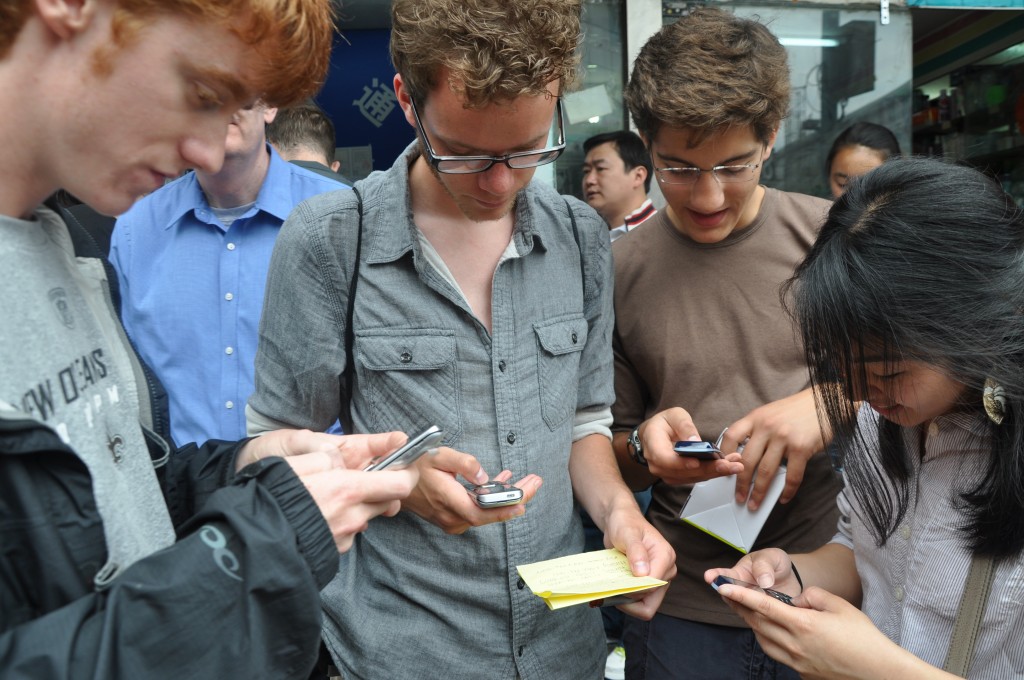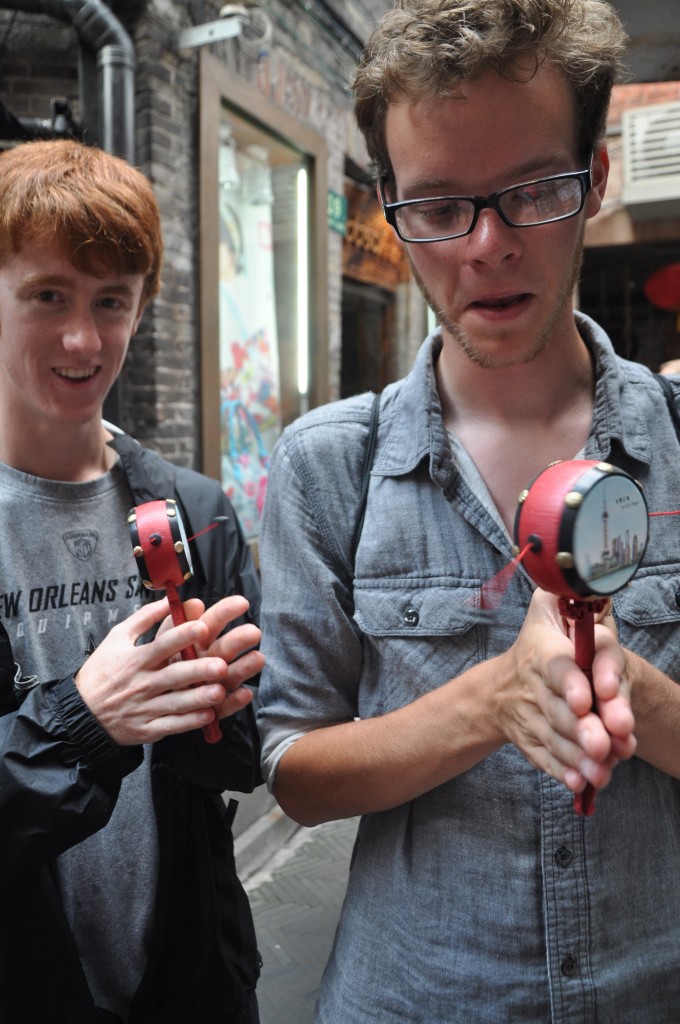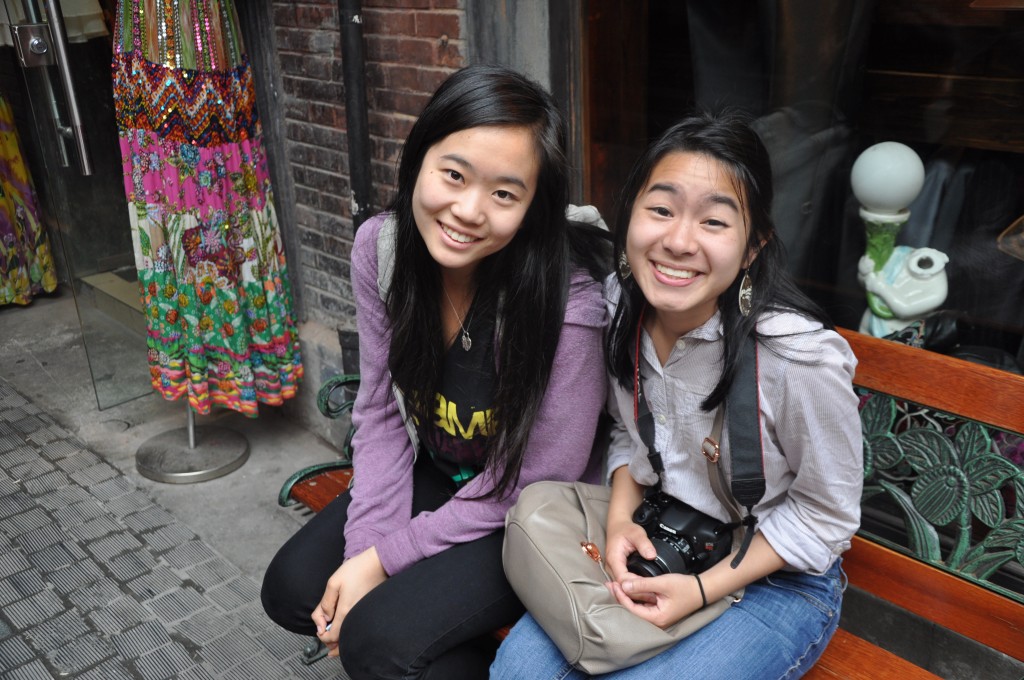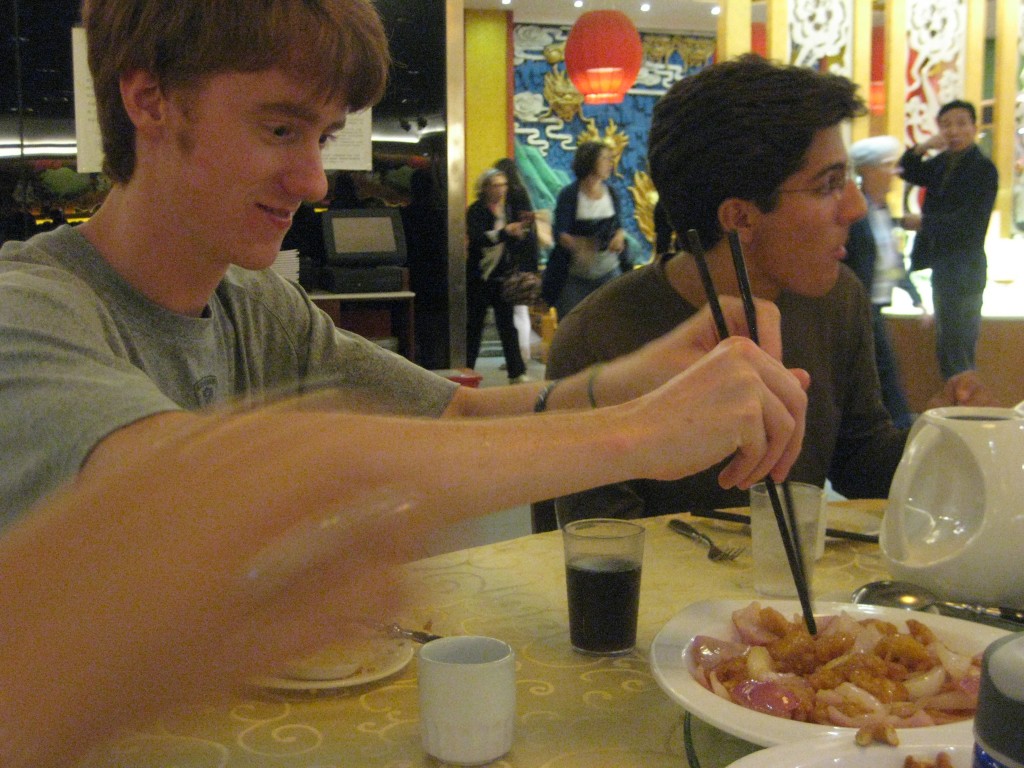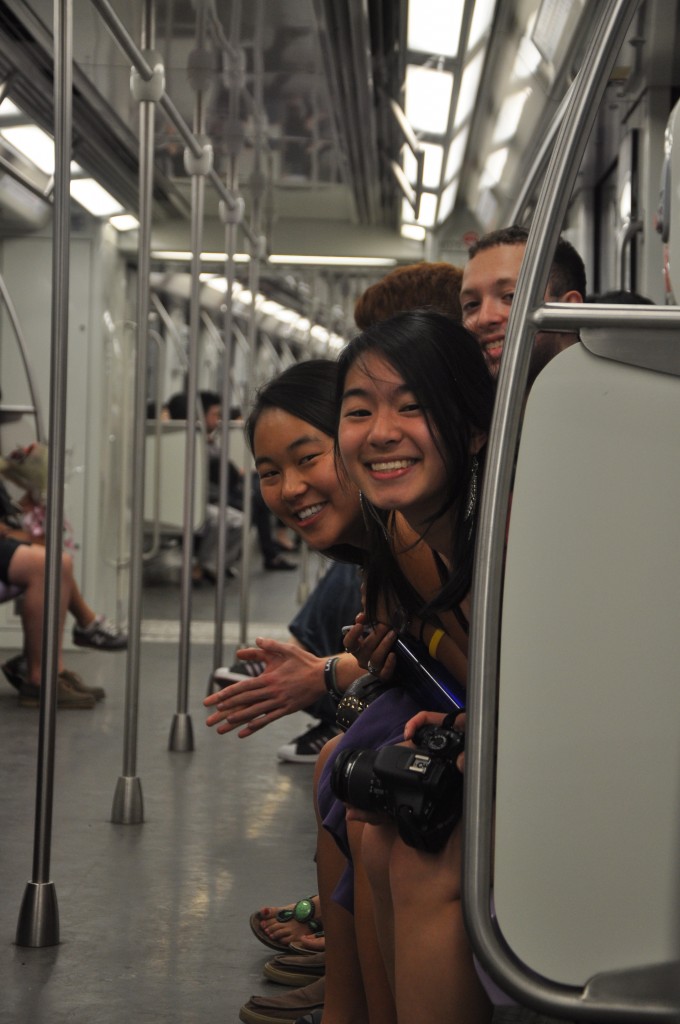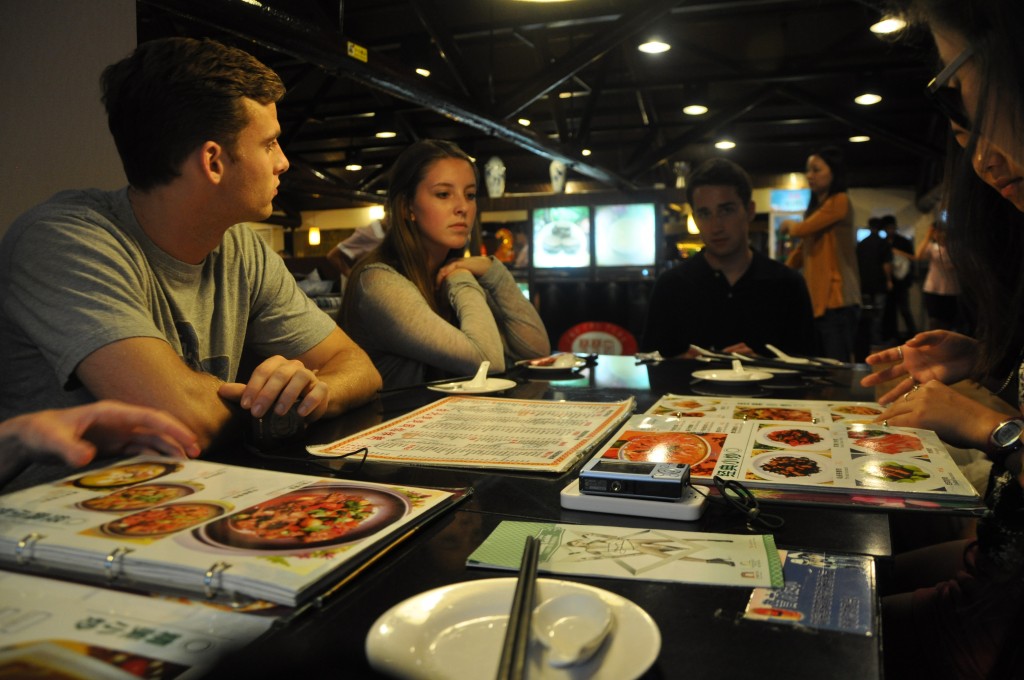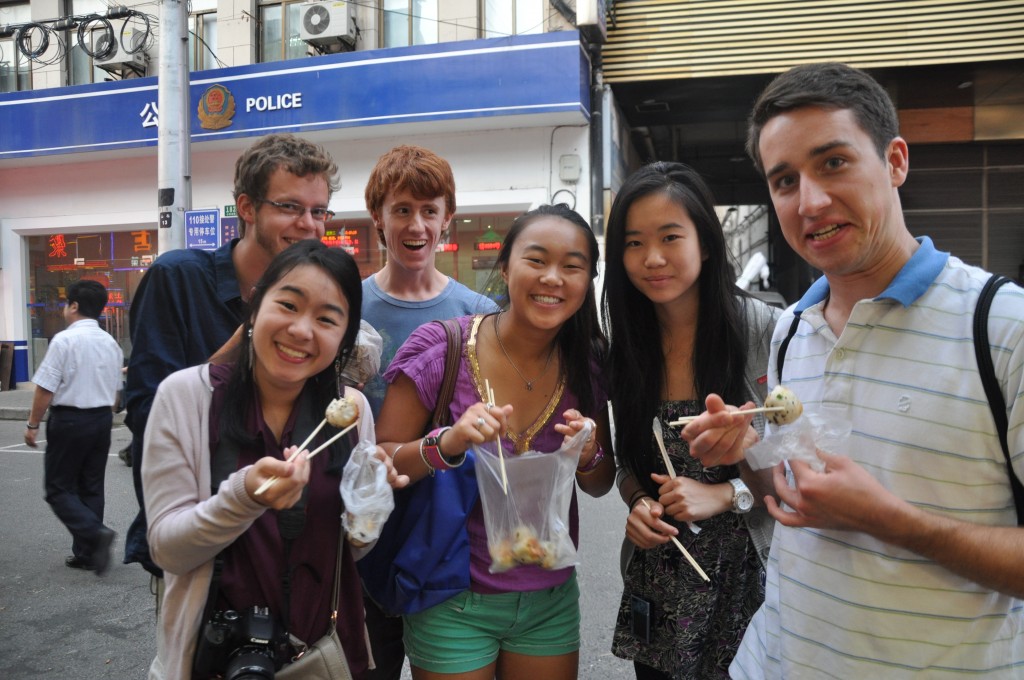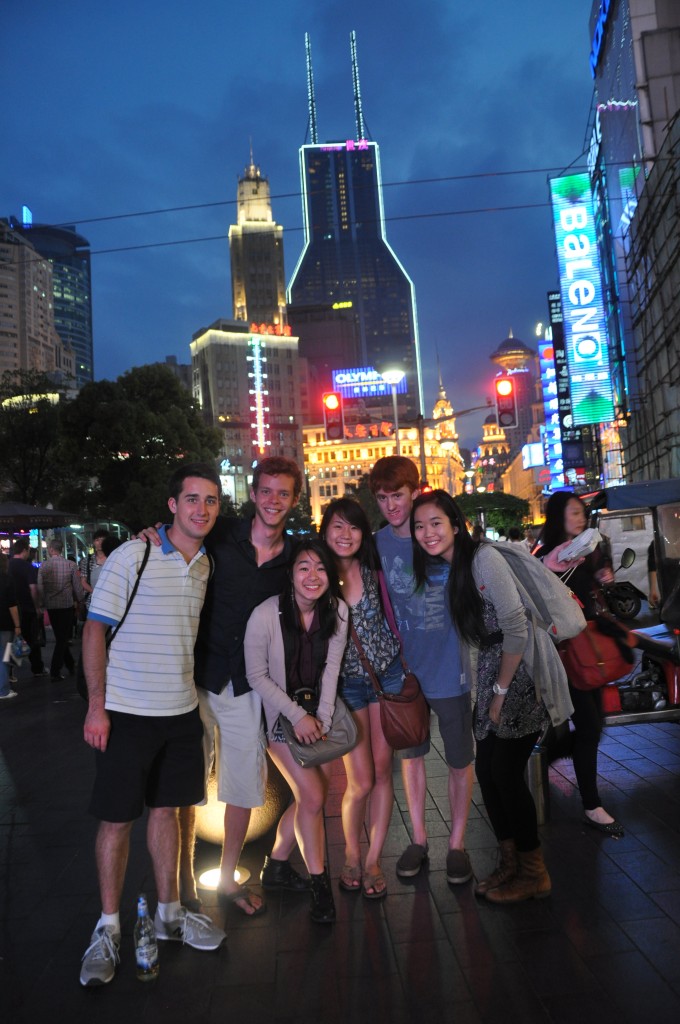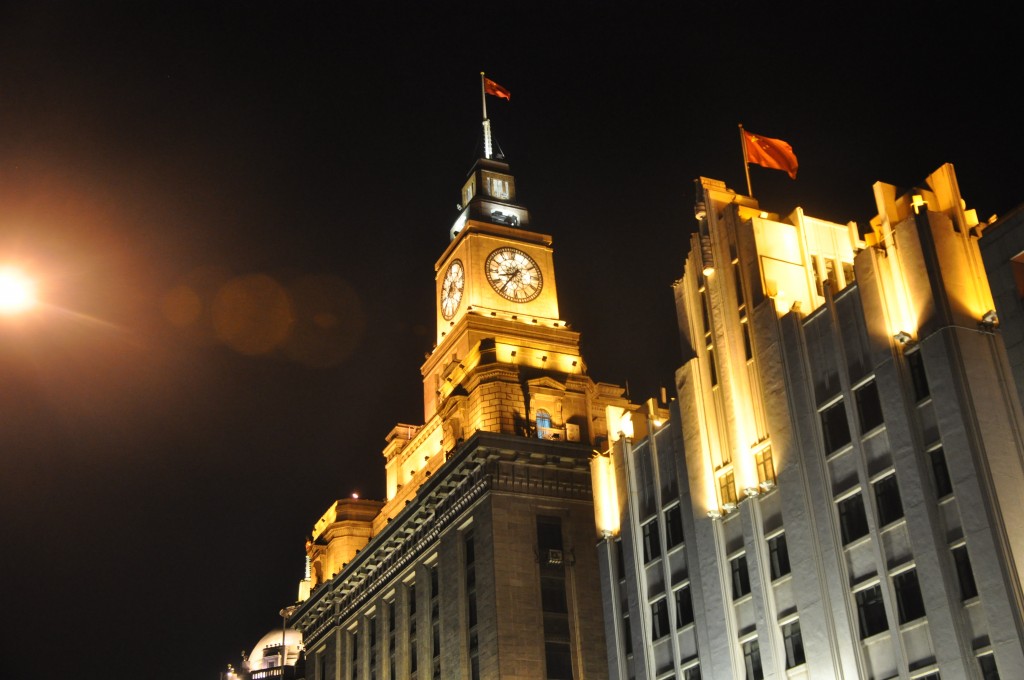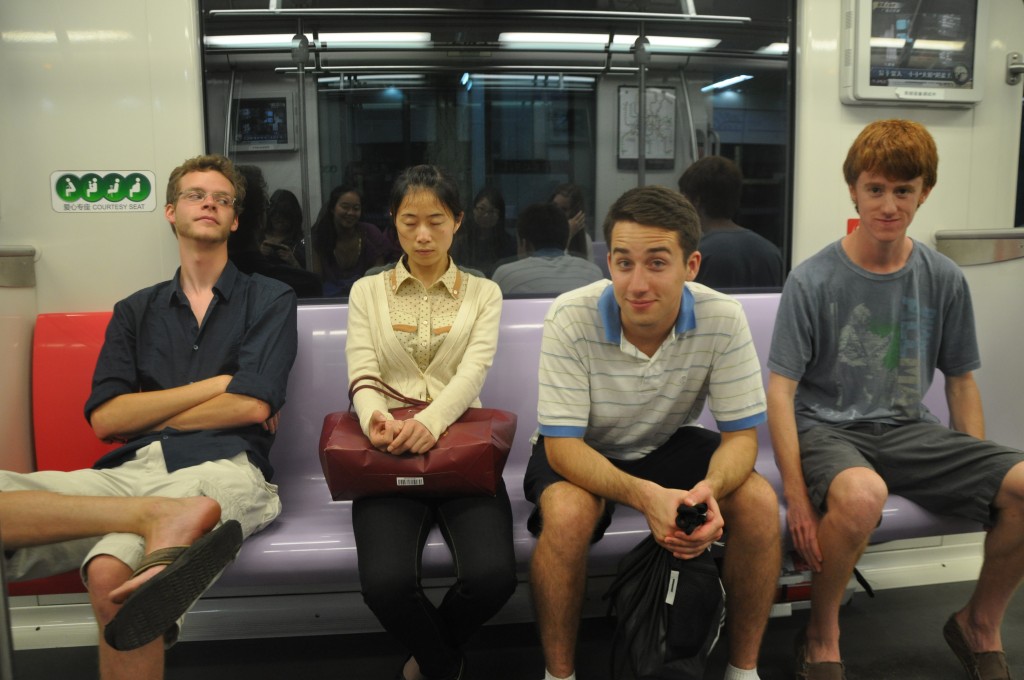By Stephanie Guo & Fan Fan
May 19: Arrival
On Saturday, May 19th, we finally arrived in Shanghai, China! It was a long-awaited moment, and we were all very excited to step into Shanghai Pudong International Airport after nearly two months of anticipation and a fourteen hour flight. After arriving at the airport, the thirteen of us EASC China scholars and our TA Luman met Prof. Brett Sheehan and our guide, David (he told us his name is actually 文军 Wenjun meaning gentle and handsome, but that we could call him David) and then made our way on a bus (in Chinese 巴士)to our hotel near Fudan University.
May 20: Buying Phones
The next day after breakfast at the hotel (an assortment of porridge, pickles, steamed buns, red-bean sweet treats, eggs–and cake), we went on our first adventure: buying Chinese cell phones!
Most of us paid (using our stipend money) about 120-170 RMB for a phone and then 60 for minutes and a SIM card. It was fun to be in the midst of the bustles and smells of the city, and I learned that Luman is a master bargainer.
Afterward, we had a mini-adventure in buying our own lunch for the first time!
Tianzifang
Our afternoon activity on Sunday was also our first class assignments. One of the things that appealed to me the most about EASC 360 China is that we learn so much about globalization and Chinese history, but in a highly hands-on context. On Sunday afternoon, our class ventured to part of the old French Concession, Tianzifang, where we looked for examples of globalization. Tianzifang is now a shopping and dining area, filled with all sorts of shops selling everything from traditional Chinese paper cuts to Bob Marley buttons. As we ambled through the narrow alleyways crammed with an artsy mix of traditional Chinese decorations and cafes representing numerous different cultures, we took photos of things that to us represented globalization.
May 21: Class
Our first two days of class consisted for three-hour lectures including extensive discussion on our readings, as well as two hours of language instruction. The first lesson involved defining historical analytical tools, as well as determining the aspects that constitute globalization. After a quick geography lesson, the class discussed the assigned readings on porcelain and tea, two commodities that have experienced the effects of globalization and commerce in Ancient China.
After a lively discussion where each of us shared particular points about what we found interesting and global in the reading, we had lunch together in the local pedestrian mall and enjoyed authentic Chinese food as a group. Afterward, we had a two-hour Chinese instruction period where we learned how to greet one another. We all had a good time, both the beginners and the advanced speakers, as we learned to help one another in learning this complex language.
Xin Tian Di
After completing our first day of lessons, our group decided to do a little exploring without the help of our Chinese friends (David, Prof. Sheehan, and Luman). We made our way to the subway station with little difficulty, and managed to get on the correct train. Arriving at Xin Tian Di was a success in our book and we happily wandered around the area, which was rather reminiscent of the Little Tokyo/financial district of our home in Los Angeles. After spending a day “looking for the global in Tian Zi Fang,” seeing globalization around Xin Tian Di became more of a game for us students as the effects of international exchange has become much more apparent after our first immersion experience. After practicing our Chinese and asking for directions (numerous times), we wound up in the popular bar and restaurant area, but quickly discovered that it was not only teeming with foreigners, but also definitely outside of our generous, but student, nonetheless, budget.
Taking the advice of a couple of nice police officers, we took a couple side streets and placed our bets on a somewhat sketchy looking restaurant. It turned out to be both delicious and cheap, and we ate to our hearts content.
Afterward, we grabbed some drinks at Xin Tian Di as a reward for staying within budget and continuing with our diet of Chinese cuisine instead of opting out for burgers. The nightlife was beautiful and the weather, balmy, but jetlag was kicking in once again and we decided to call it a night. Our subway ride back was sleepy, and we ended up getting off on the wrong stop. This allowed us to explore a little, and get accustomed to the area by way of getting lost. Eventually making it back to Fudan University, some of the more energized guys in our group peeled off to start a 3-on-3 basketball game with the local students (the Americans were rather dominant), and the rest of us returned to our dorms for a night of reading and sleep. Thus concluded a successful night of exploring Shanghai and interacting with the locals.
May 22: Nanjing Lu and The Bund
After our second day of class, our group decided to grab dinner at the famous shopping strip Nanjing Lu. Splitting up, we grabbed dinner on our own and enjoyed both local cuisines or comfort foods for home. Nanjing Lu is a popular place for tourists and locals alike and our group certainly enjoyed the night lights and shopping the area had to offer. We also went to the Bund (外滩), an area on the Huangpu River that was once part of the International Settlement. We had an amazing view of the Oriental Pearl TV Tower. All around us lights and buildings flashed brilliantly in the night.

